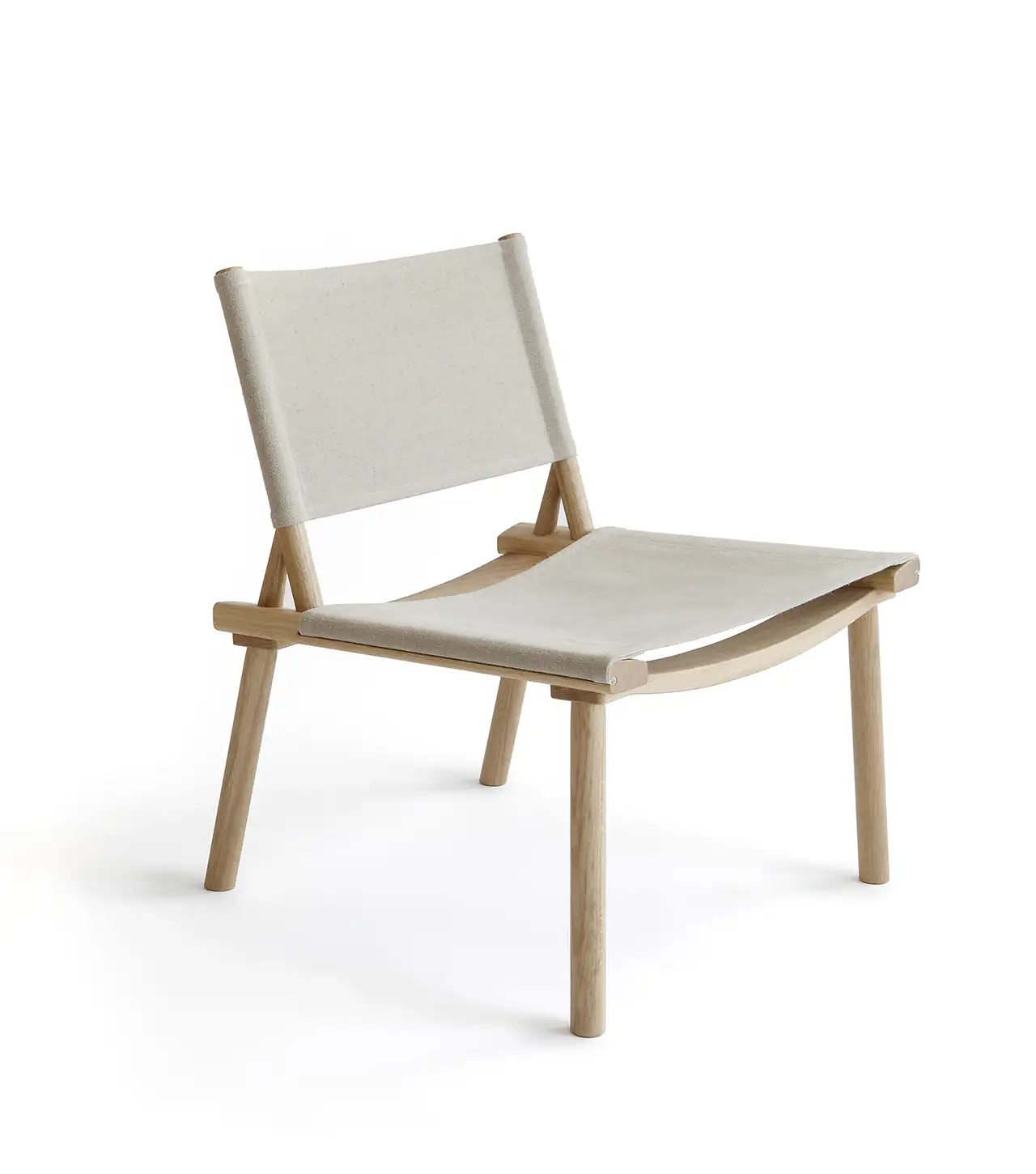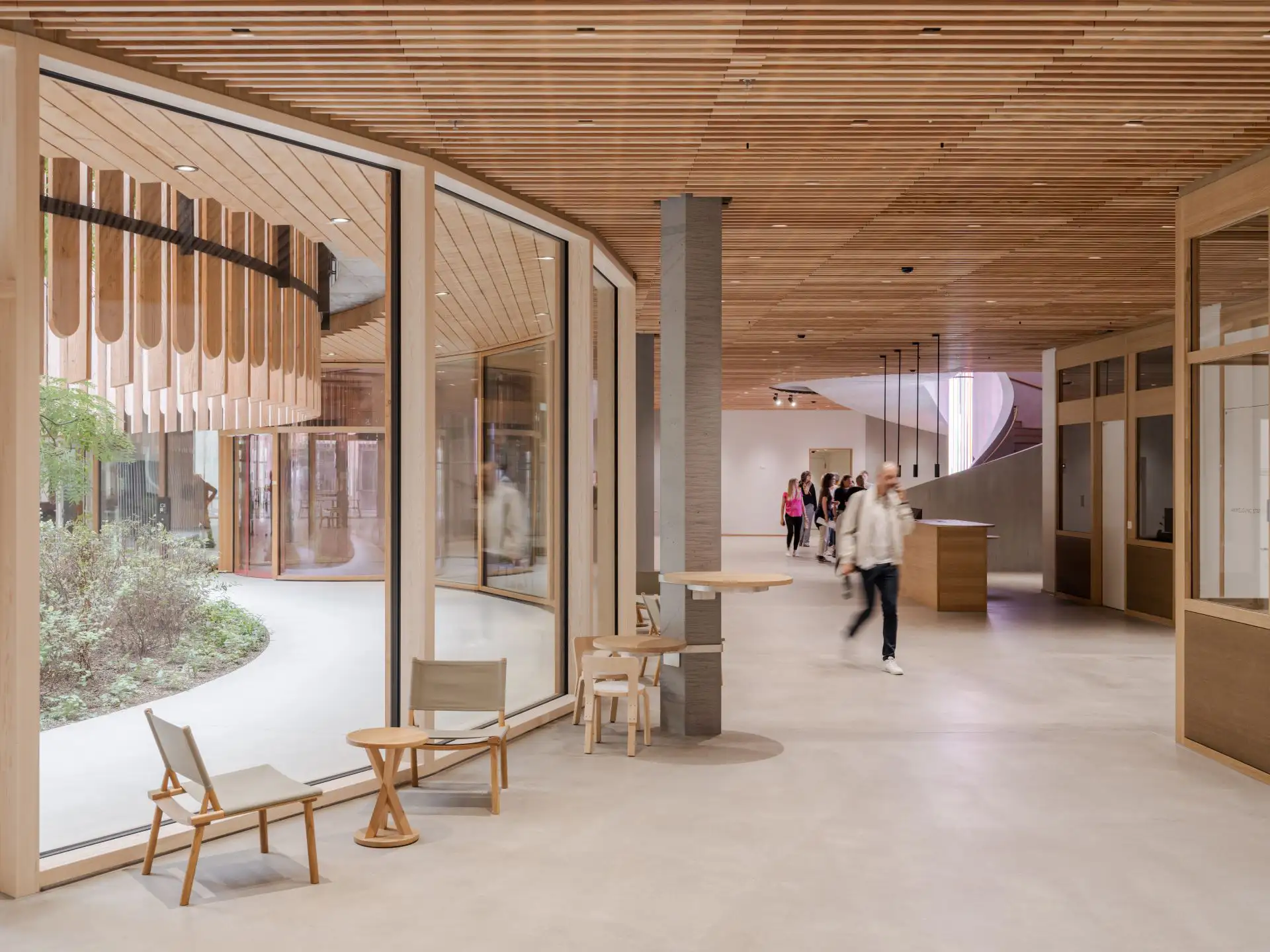The Importance of Materials and Form
The renowned architecture firm Herzog & de Meuron has selected Nikari’s December chairs for the new children’s hospital in Zurich. The building’s indoor and outdoor spaces are designed to support healing.

“We’re incredibly happy that our December chair was chosen for such a prestigious project,” says Cati Aiha from Nikari.
This is no ordinary project: it’s a university children’s hospital in Zürich, designed by the acclaimed Swiss architecture firm Herzog & de Meuron. The firm, awarded the prestigious Pritzker Prize, is known especially for its striking cultural landmarks such as the Tate Modern in London and the Elbphilharmonie in Hamburg – and also for its thoughtful healthcare and hospital architecture.
A Beautiful Union of Materials in the December Chair
The Zürich Children’s Hospital, completed last year, comprises two separate buildings: one focused on acute care and the other on research. Their innovative structure blends concrete, wood, and glass with integrated natural elements and park-like environments within the interior spaces.
Nikari’s solid wood December chairs were selected as part of the hospital’s furnishings and harmonize perfectly with the overall aesthetic. The December chair’s design is minimalistic and elegant, making it suitable for various settings – from restaurants and hotels to lounges and waiting areas, whether traditional, historic, or modern.
The December armchair has been part of our collection since 2012 and was designed by Jasper Morrison and Wataru Kumano. Its wooden components feature beautifully rounded forms that highlight the natural character of solid wood.
“The aesthetic of December is calm – the chair doesn’t demand attention but radiates a peaceful presence,” says Cati Aiha.
The solid wood frame is complemented by seat and backrest components made of either full-grain leather or cotton. For the Zürich Children’s Hospital, a special upholstery experiment was carried out using a new ecological material called Bananatex®, sustainably made from the Abacá banana plant.
One of the building’s lead architects, Jacques Herzog, has reflected on how strange it is that buildings meant for healing – hospitals – are often among the ugliest in terms of architecture. He and Pierre de Meuron want to change that.
Wood at the Heart of It All
Around 250 trees have been planted around the Zürich Children’s Hospital, and wood plays a central role in both its interior and exterior architecture.
One of the building’s lead architects, Jacques Herzog, has reflected on how strange it is that buildings meant for healing – hospitals – are often among the ugliest in terms of architecture.
He and Pierre de Meuron want to change that.
“For 20 years we’ve focused on this issue because we believe architecture can support healing. It can make a significant difference,” Herzog says.
At the Zürich Children’s Hospital, Herzog and de Meuron aimed to emphasize natural light and varied spatial proportions, while blurring the boundary between indoors and outdoors with greenery and plant life.
Herzog also highlights the importance of materials in the overall design:
“The materials in the hospital are not only visually beautiful but also pleasant to the touch.”
Wood is the most essential material in the hospital – and it’s also central to Nikari.
Respecting the nature of wood has been at the core of our philosophy from the very beginning. We want our products to convey the tactile presence of wood – the calming presence of a living material – as is the case with the December chair.

Kinderspital, photo credit: Maris Mezulis


